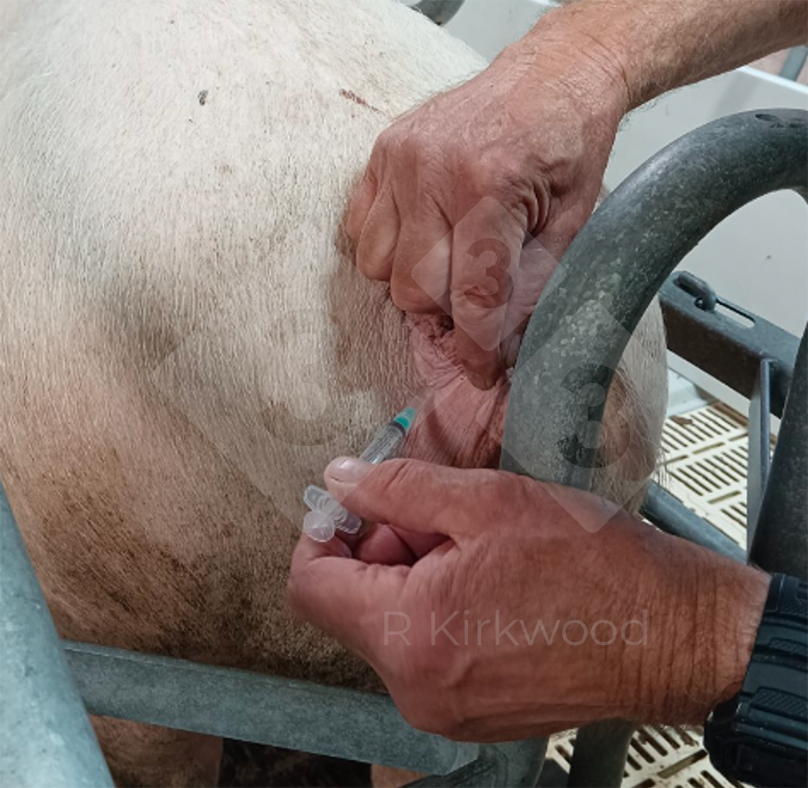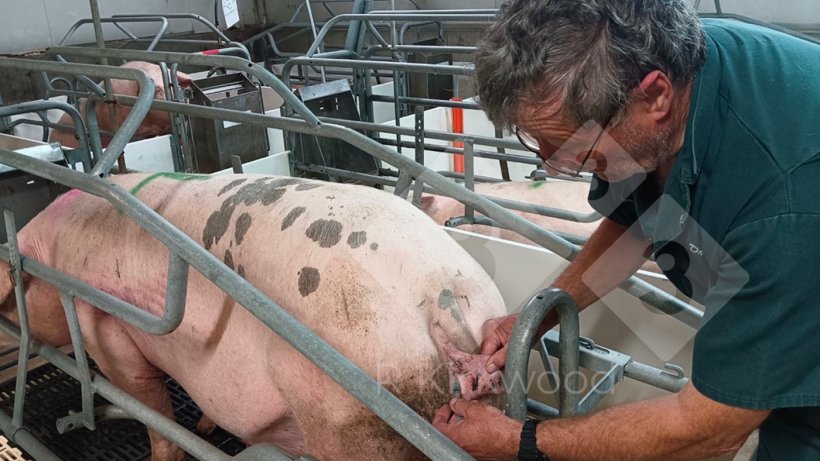The question of whether to induce farrowing or not has been addressed, but the question for today is, has anything changed? The answer is the basic protocol has not changed; two injections of a low dose of prostaglandin/analog (PGF) into the vulva 6 or 8 hours apart, and not more than 2 days before due, is still the recommended approach. However, producers must now also contend with a perceived public concern for the sow’s welfare. In Australia, a growing number of farms resist giving non-therapeutic injections and consider farrowing induction to be non-therapeutic. While this is a valid concern if the reason to induce is simply convenience, if there is a concern for piglet welfare, such as increased stillbirths or neonatal mortality, I would argue that it is ethical to induce. Certainly, there will be an economic benefit but this is secondary to the welfare benefit of improved piglet survival.
As for the question of injections, our management protocols continue to evolve. We traditionally give intramuscular injections into the sow’s neck and, while not unduly painful, the sow will see it coming and will object strongly. Simply moving the injection site to the pelvic region will effectively eliminate this objection, while moving the injection site to the vulva allows for faster and lower injection volumes (photo 1). Most recently, the development of a PGF tablet for vaginal deposition removes the need for any injection.


The subject of farrowing induction has become more topical in recent years because of the successful selection of sows for very large litters. These large litters take longer to farrow and have decreased average piglet birth weights, an increased birthweight variation and more very low birth weight piglets, all predisposing to increased mortality. Due to being less competitive at the udder, pigs born at or below 1.1 kg are at particular risk of early mortality.
Large litters are becoming the norm in the pork industry and so reduction of these negative effects requires improved farrowing supervision to permit intervention strategies, such as accelerating piglet delivery, improved colostrum management, and cross-fostering. However, effective interventions require effective farrowing supervision and, in the absence of 24-hour coverage, farrowing induction is needed to improve the ability of farm staffs to supervise farrowing.
What about gilts?
While gilts can, indeed, be successfully induced, their colostrum quality is not as good as that of older sows and their probable gestation length is likely an unknown. Induction has no appreciable effect on colostrum quality but while I would induce gilts if needed, I recommend not doing so unless deemed necessary.
The use of Oxytocin
Finally, advice regarding oxytocin is unchanged; use it strategically for individual sows suffering a prolonged farrow and/or after she has delivered at least 7 pigs. As a tool, oxytocin should be used only when needed. Most stillbirths occur after delivery of the 7th piglet so it is likely not needed during early farrowing. However, if farrowing is taking a long time (more common with large litters) and at least 7 piglets have been delivered, consider the use of oxytocin as these litters are at increased risk of stillbirths. The dose of oxytocin should never exceed 10 IU and, if injected into the vulva, I recommend a dose of only 2.5 to 5.0 IU

What are the risks of farrowing induction?
The induction of farrowing potentially causes the birth of premature piglets and, as with any premature ‘baby’, poor lung development is a potential risk. Piglet lungs develop air sacs (alveoli) starting only 2-weeks before birth. However, as recently confirmed in a systematic review, induction is not a problem for piglets as long as it is done no more than 2-days before the calculated due date. If sows are induced 3-days early, piglet viability is more likely to be compromised. Therefore, the average gestation length, ideally calculated from the last rather than the first mating (closer to ovulation and so the real start of pregnancy), must be determined for each farm (eg. calculate from the last 100 non-induced sows) and never induce more than 2-days before this date. If none of your sows farrow before induction, re-evaluate your calculated gestation length as maybe it has been underestimated. Also, if done too early, the result will be increased neonatal mortality. Also, remember that all things change with time and this includes the average farm gestation length. If you change the sow genetics then you potentially change the average gestation length but the rule “never induce more that 2-days before due date” remains!
Take home message
- Be strategic; do not induce unless evidence says it is needed
- Do not induce more than 2 days before due date
- Inject half-dose of prostaglandin into the vulva in morning and again in afternoon
- Do not use oxytocin unless farrowing is taking more than 4 hours and at least 7 piglets have been delivered. Be aware that oxytocin is very potent and, as any women who has given birth will tell you, it is very painful, so use it sparingly.







